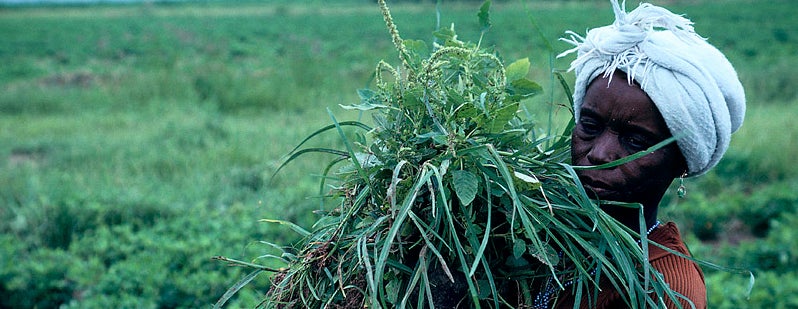Read this post in Español, Français
 Today the world seems to hold its breath again amidst the sudden hike in food prices caused by a historical drought in the US and lack of rain in Eastern Europe.[1] It is a thorny task to predict whether the very recent increases in food prices will unfold into magnitude of the crises seen in 2007-08 and again in 2010-2011: differences between now and then in the price of energy, a critical driver of food prices, give a reason for optimism; as does the hope that governments now better understand the painful consequences of some panic policies that have been put in place during previous episodes. On the other hand, months of volatility in global food prices, low food stocks and food security crisis alerts in parts of East and West Africa all paint a gloomy picture.
Today the world seems to hold its breath again amidst the sudden hike in food prices caused by a historical drought in the US and lack of rain in Eastern Europe.[1] It is a thorny task to predict whether the very recent increases in food prices will unfold into magnitude of the crises seen in 2007-08 and again in 2010-2011: differences between now and then in the price of energy, a critical driver of food prices, give a reason for optimism; as does the hope that governments now better understand the painful consequences of some panic policies that have been put in place during previous episodes. On the other hand, months of volatility in global food prices, low food stocks and food security crisis alerts in parts of East and West Africa all paint a gloomy picture.
So, are we are heading toward another global food crisis?
The short answer is that we do not know. We cannot predict the unpredictable, such as future weather and other events that unleash energy prices, or domestic pressures that push governments to make hazardous decisions. But this is obvious. What is not so clear is whether we need new tools that are capable of warning countries of looming crises sufficiently early? Or, do we need more sustained attention from decision-makers regardless of the previous month’s food price status? Ideally, we need both.
We cannot predict the unpredictable but we need to – no, must – be better prepared for it. In part, the planning and preparation to face a crisis implies identifying the right warning signs and preparing the right responses at the right time.
How can we be better prepared to face food price crises?
One cannot prepare sufficiently early to prevent a future crisis (food related or other), but when it comes to an appropriate response to an unfolding crisis, these can also be tricky: late responses tend to be much less effective and more expensive, while a response that comes too early may be responding to a "false positive." Moreover, the varying types of crises – ranging from severe but transitory food insecurity caused by an unprecedented drought to predictable and cyclical food supply declines during lean seasons to recurrent emergencies related to structural issues such as conflict and migration, as seen in the Horn in Africa and the Sahel – can make it even more difficult to craft an adequate response.
Unfortunately, what precisely constitutes a global food crisis is an elusive notion. The international community does not have a clear definition of what a food crisis is, and agreeing on this concept or definition remains a challenge. The international community uses common concepts such as abnormal events and exceptional suffering, but lacks a unique conceptualization of the issue, a unique set of indictors and thresholds, and a consistent set of monitored countries.[2] Progress on these fronts would certainly help improve the preparedness of the international community to respond to unfolding crises.
A recent workshop at the World Bank co-sponsored by the Secure Nutrition Knowledge Platform aptly entitled “Calling a Spade a Spade”[3] examined the merits and limitations of three available early warning and monitoring frameworks that are used to identify unfolding food price crises. These included USAID’s FEWS NET, IFPRI’s Excessive Price Volatility Tool and the World Bank’s Global Food Crisis Monitoring Framework. The conclusion, however, remains that despite significant progress in crisis diagnosis, we are still far from agreeing on a set of consolidated and validated definitions and tools and, more notoriously, from an effective management of existing data. And this is not just an academic exercise: responding to a food price crisis is not “only” about calibrating the interventions – mixing prevention and mitigation, aligning key stakeholders’ interests, and mobilizing resources – but also about calibrating the right timing of responses.
[1] 30 JULY 2012 WORLD BANK FOOD PRICE PRESS RELEASE
[2] APRIL 2012 FOOD PRICE WATCH
[3] “CALLING A SPADE A SPADE-WHEN DO FOOD PRICES TURN INTO A CRISIS?” SEMINAR, 30 APRIL, 2012.


Join the Conversation